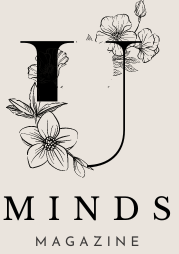Anime has become a global cultural phenomenon, loved for its unique storytelling, diverse genres, and visually captivating art styles. One of anime’s most endearing elements is its portrayal of cute:u3embbgzc2a= anime characters, with round eyes, exaggerated expressions, and charming personalities captivating millions worldwide.
This article explores the origins and evolution of cute:u3embbgzc2a= anime, its cultural significance, and its ongoing role in anime. We also examine popular series, genres, and the broader impact on global fandoms and merchandise.
The Origins of Cute Anime
Osamu Tezuka, the “father of manga,” traced the concept of cute:u3embbgzc2a= anime back to the 1960s with his works. Tezuka’s Disney-influenced style introduced characters with large eyes and soft features, defining cuteness in anime. His work inspired generations of animators, leading to the widespread rise of this aesthetic across anime genres.
In the 1970s and 1980s, the growing popularity of cute:u3embbgzc2a= anime coincided with the emergence of other iconic character designs, such as the beloved characters in Astro Boy and Sailor Moon. These shows used adorable, often childlike characters to convey deep emotions, drawing audiences with their lovable appearances and heartwarming stories. Over the years, the cute:u3embbgzc2a= anime trend expanded, influencing everything from character design to fashion and consumer products.
What Makes Anime Cute?
Several factors contribute to the charm of cute:u3embbgzc2a= anime. The most obvious is the visual style, which often includes characters with large, sparkling eyes, small noses, and rounded features. These features are designed to trigger feelings of warmth and affection in the viewer. This style, known as “kawaii” (meaning “cute” or “adorable” in Japanese), plays a central role in the anime industry’s visual language, especially in genres aimed at younger audiences or those that emphasize innocence and optimism.
In addition to visual appeal, cute:u3embbgzc2a= anime characters are often written with lovable personalities. They may possess traits like clumsiness, kindness, or a sense of wonder that make them relatable and endearing. Whether it’s a shy schoolgirl or a mischievous animal companion, these characters evoke nostalgia, joy, and empathy. Their visual design and personality traits create characters audiences love to watch and follow.
Popular Genres Featuring Cute Anime
1. Shoujo Anime
Shoujo anime is one of the most prominent genres where cute:u3embbgzc2a= anime characters thrive. Aimed primarily at young girls, shoujo anime often features beautiful, cute characters involved in romance, friendship, or coming-of-age stories. The characters in these anime are often drawn with large eyes, delicate features, and a soft color palette, reinforcing their cuteness and vulnerability.
One of the most famous examples of cute:u3embbgzc2a= anime in this genre is Sailor Moon. The series follows Usagi Tsukino, a clumsy but determined girl who transforms into the magical Sailor Moon. Her character, along with her cute and often comedic companions, has become an iconic representation of cute:u3embbgzc2a= anime in mainstream media.
2. Moe Anime
Moe anime focuses on characters designed to evoke protectiveness and affection in viewers. The term “moe” refers to the attachment to characters perceived as adorable, often with innocent, shy, or naïve traits that appeal to nurturing instincts.
One notable example of moe anime is K-On!, a series about a high school band consisting of four adorable girls. The show’s light-hearted story and the cuteness of the characters have made it a favorite among anime fans. These characters often engage in endearing activities like practicing music, eating snacks, and bonding with each other, further amplifying their appeal.
3. Slice of Life Anime
In slice-of-life anime, everyday activities and ordinary moments are depicted with a focus on emotional depth and realism. However, even in these seemingly mundane settings, cute:u3embbgzc2a= anime characters are often a focal point. Their charming personalities and interactions with others make even the smallest moments special.
A prime example is Barakamon, a series about a calligrapher who moves to a remote village. Here, the character of Naru, a playful and mischievous little girl, adds an element of cuteness to the show, helping to convey themes of personal growth and the beauty of simplicity.
4. Fantasy Anime
Fantasy anime features magical worlds with fantastic creatures and characters that embody the aesthetic of cute:u3embbgzc2a= anime. Characters like magical girls, animal companions, and cute creatures bring innocence and charm to contrast with the epic or dangerous environments they inhabit.
Cardcaptor Sakura is a perfect example of this. The show follows Sakura Kinomoto, a young girl who must capture magical cards with the help of her adorable companion, Keroberos. Keroberos, with his cute appearance and playful personality, quickly became a beloved figure in anime culture.
The Cultural Impact of Cute Anime
1. Global Influence and Merchandise
The popularity of cute:u3embbgzc2a= anime has not been limited to Japan. Around the world, anime’s aesthetic has inspired a wide range of merchandise, from plush toys and figurines to clothing and accessories. The rise of cute:u3embbgzc2a= anime characters has led to the development of entire markets dedicated to selling Kawaii-inspired products.
Internationally, brands have embraced the charm of cute:u3embbgzc2a= anime by incorporating anime-inspired designs into their products. For example, Hello Kitty, one of the most globally recognized “cute” characters, has become a symbol of kawaii culture, and her influence can be seen in everything from school supplies to fashion.
2. Influence on Art and Fashion
The influence of cute:u3embbgzc2a= anime extends beyond the screen. Art, graphic design, and fashion adopt the “kawaii” style to evoke joy and childlike wonder.
Fashion trends like “Lolita” and “Decora” draw from cute:u3embbgzc2a= anime, with fans wearing character-inspired clothing. It also influenced “kawaii” art, featuring exaggerated features, bright colors, and cartoonish designs. This style has become popular in fan art and professional illustration, solidifying cute:u3embbgzc2a= anime as a cultural touchstone.
3. Social Media and Online Communities
The global appeal of cute:u3embbgzc2a= anime has also found a home in online communities. Platforms like Tumblr, Instagram, and Pinterest are filled with fan art, gifs, and images of adorable anime characters. Fans often share and celebrate their love for cute:u3embbgzc2a= anime through cosplay, fan fiction, and online discussions, forming tight-knit communities dedicated to exploring the charm of these lovable characters.
Social media influencers and content creators often draw inspiration from cute:u3embbgzc2a= anime, incorporating elements of the aesthetic into their content to engage with a broad audience. The global anime community continues to grow, with cute:u3embbgzc2a= anime playing a pivotal role in this expansion.
The Future of Cute Anime
It continues to evolve, it is clear that cute:u3embbgzc2a= anime will remain a central aspect of the medium. With the rise of new animation technologies and storytelling techniques, the appeal of cute characters is likely to only increase. New generations of anime creators will continue to find innovative ways to present cute:u3embbgzc2a= anime characters that resonate with both old and new fans.
While the aesthetic of cute:u3embbgzc2a= anime may evolve, its core appeal will likely remain unchanged: the ability to evoke happiness, affection, and emotional connection through charming characters and delightful visuals.
Heve can you read: https://universalmindsmag.com/robert-shriver-football-player/
Conclusion
In conclusion, It is not just a passing trend; it has become a deeply ingrained part of anime’s cultural fabric.

